#silvopasturing
Text
Silvopasture gives cows choice in where to be and what to eat, which Karolini Tenffen de Sousa, a postdoctoral fellow at Instituto de Zootecnia in Brazil who specializes in cattle behavior, says can improve their health. Cows can be in the shade when they want, drink water when they want, and graze when they want. “If they don’t experience stress their physiology will be good,” she said.
According to a 2017 study from the Center for Agroforestry at the University of Missouri, silvopasture can also extend the grazing season, so that it starts earlier in spring and lasts longer in fall compared to open pasture. Forage also grows better in silvopastures during the hottest times of the summer compared to open pasture, the study found.
“The silvopastures are gold during droughts,” Chedzoy said. “The plants don’t wither and burn up like they do in the shadeless pastures.”
Chedzoy says the cows’ diet of grass, forage and hay that he harvests in the summer means he doesn’t need to supplement his feed with protein meal or additional roughage the way many farmers do. And having the cows spread out across the forest all year long – instead of being stuck in a barn during the winter – means their waste doesn’t pollute the local watershed.
And silvopasture allows for many layers of biodiversity compared to grasslands. They support a wider variety of bird species, more pollinators, bigger and more diverse mammals, and a much wider variety of plant life with more varied root systems.
But it also requires careful management and daily rotation, as livestock can damage trees by trampling roots. This wear and tear can go unnoticed for years, and once the damage is visible, it can be too late to save those valuable trees.
While research is still in early stages, Project Drawdown, a leading organization promoting climate solutions, has heralded silvopasture as an agricultural solution to the climate crisis due to hopes it can increase carbon sequestration through plants pulling carbon from the atmosphere through photosynthesis, sinking it into soils, and holding it in their own biomass.
Alix Contosta, a research assistant professor at University of New Hampshire who focuses on the relationship between land use and climate, says that her research has shown that carbon and nitrous oxide emissions were lower in silvopastures compared to areas that were clear cut or in treeless pasture, meaning cattle on silvopasture has lower emissions. In addition, most silvopastures, like Chedzoy’s, don’t require emissions-intensive fertilizers or feed that has to be grown and shipped to the farm, further reducing the impact on the climate.
191 notes
·
View notes
Text
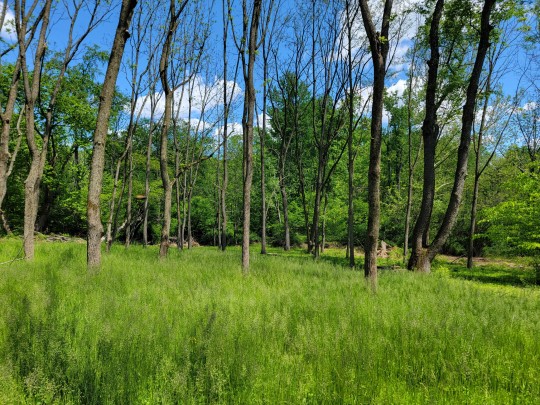
Forest of Dying Ash - May 6th 2023
#more ash that succumb to the borer#nature#forest#Delaware#mt cuba#photographers on tumblr#original phography#spring#looks like silvopasture but its not just an experimental plot
8 notes
·
View notes
Text
Shade, Shelter, and Sustainability: The Beauty of Silvopasture
Discover the harmonious world of Silvopasture, where trees and livestock coexist. This sustainable farming practice offers shade and shelter to animals while nurturing a healthier environment.
Silvopasture isn't just about farming; it's a vision of balance and resilience. It reduces heat stress on animals, enriches the soil, and supports biodiversity.
Explore the wonders of Silvopasture and how it transforms agriculture for the better.
Embrace a future where sustainability and farming thrive together.
0 notes
Note
Lately I've been reading "Drawdown", by Paul Hawken et al, a comprehensive set of strategies for tackling the climate crisis. Your Cambrian Wildwoods post reminded me of one of the solutions - Silvopasture, from the Latin for 'Forest Grazing'.
Essentially it means proposing to farmers that a portion of land be forested and that their animals freely graze there. It can be extremely flexible - planting trees in existing pasture, thinning down woodland to allow for forage growth, using trees as natural fencing, and more.
It's got good potential for carbon capture, and also for saving farmers money in feed and fertiliser, creating better conditions for livestock by keeping them in the shade, and potentially providing secondary income sources in fruit, nuts, etc.
What do you think of it as a potential avenue for Welsh farming? The focus in "Drawdown" is on cattle farming, but I don't see any reason not to trial it with sheep - especially since it could be spun as a hybrid of both aspects of traditional culture...
("Drawdown" also emphasises peer-to-peer uptake through word-of-mouth, rather than being pushed by outsiders.)
Oh, yes - it's basically what they did at Pontbren. That was a farmer-led initiative - one of the big expenses with sheep farming is having to bring them into barns over the winter and supply all feed, but traditionally they'd have stayed out all year. So these farmers got together and went, "How do we ethically and sustainably reduce this expense?"
What they realised is that they were paying for (a) the government-enforced decision post-WW2 to swap to high-yield breeds of sheep that weren't suited to the Welsh climate and topography (i.e. wet as fuck and mostly vertical), and (b) the decline of traditional hedgerow management and shelterbelts. And so the dream was born.
They contacted the Woodland Trust purely to act in an advisory capacity - they wanted to know which trees would be best, and where. They could take much land out of production, but the beauty of hedgerows and shelterbelts is that they're linear features that replace your fences. That was how environmentalists got on board - we were invited, and we remembered that. We were therefore allowed to do a couple of experiments as it progressed, such as testing the infiltration rates of rain into groundwater rather than run-off and comparing it between hedgerow fields and fence fields. Meanwhile, the farmers replaced their stock with native breeds - I believe mostly Welsh Mountain Sheep, which look amazing:
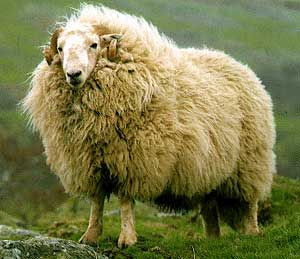
Ain't no rain getting in THAT.
Anyway, a few strategically placed shelterbelts and hedgerows later and:
The sheep can now safely stay out all year round, excepting storms
The sheep are actually healthier and have higher welfare standards
Floods have reduced thanks to higher infiltration rates
Soil erosion is reduced so the fields and river are healthier
The farmers have saved money
The farmers are now making extra money, because they started a tree nursery and sell trees as a side project
You can read multiple publications on it here
So yes! Silvipasture is actually a huge tool for the future that we need to be embracing, as is agroforestry for arable farming, and the frustrating/hopeful part of it is, these are tools we used to use. This isn't new knowledge - it's forgotten knowledge that we need to reclaim. But even aside from the immediate benefits, it also has massive implications for resilience in a world with a warming climate, and we need to do it faster.
591 notes
·
View notes
Text
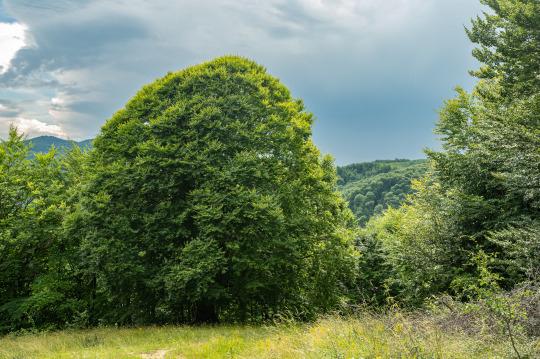
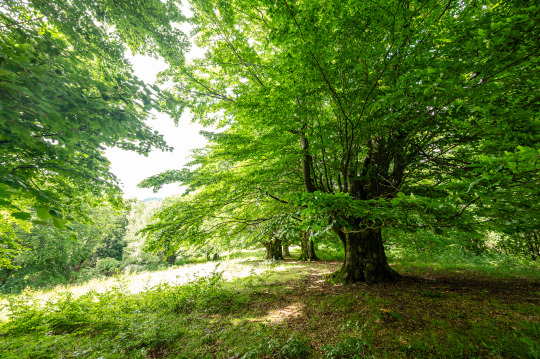


Silvopasture with beech (Fagus sylvatica)
Făgăraș Mountains, Wallachia, Romania
#original photography#photographers on tumblr#landscape photography#nature photography#agriculture#forest#trees#romania#carpathia#summer#hiking
170 notes
·
View notes
Text
So I've figured out where the clan chooses to settle down on when Shapur makes them stay— it's gonna be a hilly forest, land currently not occupied or actively used as farmland even though it's close to the castle, inspired by this series: part 1 and part 2
The reasoning on why I chose that type of location will be lifted straight from those pages! Though it's about cities, I kinda decided it'd be at least decently plausible to apply similar principles for the lands surrounding a castle.
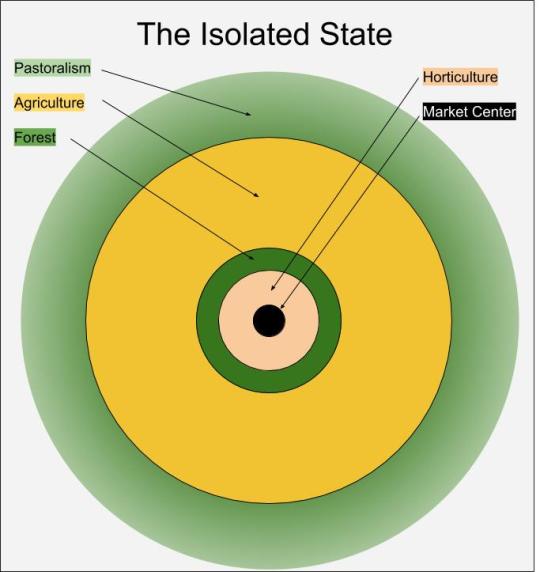
So this is the “ideal” model of a city and the use of its surrounding lands assuming the land is perfectly flat and there's no interfering factors. Fruit gardens and dairy stuff tends to be closer to the center bc their products tend to spoil the quickest, and then things radiate out according to ease transportation— it's a very gross simplification bc my brain is kinda not cooperating here but. Yeah. But things like rivers and hills and such throw a wrench into this model, and that's where “marginal land” comes into play:
“When we talk about agriculture broadly, we often refer to marginal land as encompassing land which is somehow less than ideal in one or several of these factors, but not entirely infertile. If demand is low, marginal land, even fairly close to a city, might go unused, because the cost of putting it into use isn’t worth the production.”
×
“Areas of forest necessary for the city are often found on land which is rough or hilly or otherwise unsuited for traditional agriculture. Such forest land is also often put to multiple uses – silvopasture is the term for letting orchards or forests double as grazing grounds for animals.”
×
“Such multi-use spaces, taking advantage of marginal areas close to a city, could offer a mix of valuable products from land which would be underutilized otherwise.”
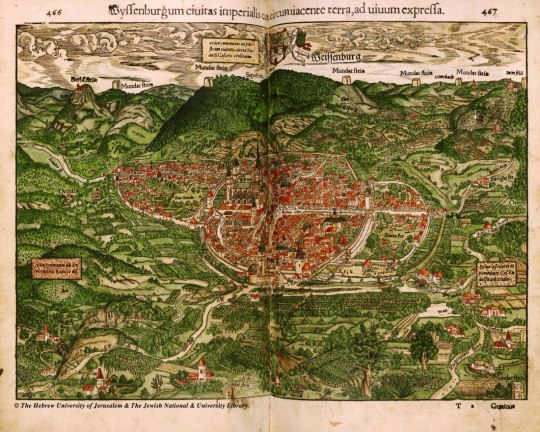
Wissembourg, 1550 from Sabastian Munster’s Cosmographiae Universalis (1598). Image via the Historic Cities Research Project. Notice how the differences in terrain (height, soil quality, river access) create a patchwork of land-use, spreading out from the city. There is still a clear intensity drop as you move further and further away, but within zones, there is tremendous variance.
“In practice, varying land quality is going to create pockets of more intensive or less intensive use in and around our city. You can see this really clearly in the map of Wissembourg above. Orchards and fields cover the flat areas, with villages clinging to the roads, but the hilly areas are left mostly as pasture or forest, creating little pockets of more or less intensive usage.”
×
“Silvopasture (silva is forest in Latin) is the practice of integrating trees, forage, and the grazing of domesticated animals in a mutually beneficial way.”
So, yeah. There's unused land available near the castle, and the clan folk would feel right at home inside a forest due to the significant role trees play in their faith. And they keep animals both for agricultural purposes and for magical familiar purposes. That sort of thing.
My brain is stuttering.
10 notes
·
View notes
Text
Industrial agricultural wants to act like they've conquered nature and they're immune to climate change. They want to act like they're as everlasting as the oil industry. The think they can just extract and extract no matter the weather.
But clearly they can't. All agricultural products are directly tied to the weather. It's time for industrial agriculture to stop ignoring climate change. It's time for them to adopt these system-wide reforms (via project drawdown)
Plant-Rich Diets can reduce 103 gigatons of CO2 equivalent by 2050: Animal agriculture is a significant source of greenhouse gas emissions. Favoring plant-based foods reduces demand, thereby reducing land clearing, fertilizer use, and greenhouse gas emissions.
Reduced Food Waste can reduce 102 gigatons: Roughly one-third of the world’s food is never eaten. By reducing loss and waste, we can reduce the need for land and resources used to produce food as well as the greenhouse gases released in the process.
Silvopasture can reduce 42 gigatons: Silvopasture integrates trees, pasture, and forage into a single system. Incorporating trees into agriculture improves land health and increases carbon sequestration.
Perennial Staple Crops can reduce 33 gigatons: Perennial staple crops provide important foods, such as bananas, avocado, and breadfruit. Compared to annual crops, they have similar yields but higher rates of carbon sequestration.
Tree Intercropping can reduce 24 gigatons: Growing trees and annual crops together increase biomass, soil organic matter, and carbon sequestration.
Multistrata Agroforestry can reduce 24 gigatons: Multistrata agroforestry systems mimic the structure of natural forests. Layered trees and crops achieve high rates of both carbon sequestration and food production.
Regenerative Annual Cropping can reduce 23 gigatons: Building on conservation agriculture with additional practices, regenerative annual cropping can include compost application, green manure, and organic production. It reduces emissions, increases soil organic matter, and sequesters carbon.
Managed Grazing can reduce 21 gigatons: Managed grazing involves carefully controlling livestock density and timing and intensity of grazing. Compared with conventional pasture practices, it can improve the health of grassland soils, sequestering carbon.
Abandoned Farmland Restoration can reduce 20 gigatons: Restoration can bring degraded farmland back into productivity and sequester carbon in the process.
Bamboo Production can reduce 20 gigatons: Bamboo rapidly sequesters carbon in biomass and soil and can thrive on degraded lands. Long-lived bamboo products can store carbon over time.
Improved Cattle Feed can reduce 15 gigatons: Optimizing cattle feeding strategies can lower the methane emissions produced within the ruminant digestive system. Nutrient enriched diets of high-quality forages, additives, and supplements aim to improve animal health and productivity.
Improved Rice Production can reduce 14 gigatons: Flooded rice paddies produce large quantities of methane. Improved production techniques, including alternate wetting and drying, can reduce methane emissions and sequester carbon.
Nutrient Management can reduce 11 gigatons: Overuse of nitrogen fertilizers—a frequent phenomenon in agriculture—results in the production of nitrous oxide, a potent greenhouse gas. More judicious use of fertilizers can curb these emissions and reduce energy-intensive fertilizer production.
22 notes
·
View notes
Text
Regenerative Agriculture Market 2027 By Size, Share, Growth, Opportunities, Forecast

Evolving agricultural practices are driving the growth in Global Regenerative agriculture Market in the forecast period, 2023-2027.
According to TechSci report on, “Regenerative Agriculture Market - Global Industry Size, Share, Trends, Competition, Opportunities and Forecast, 2017-2027”, the global regenerative agriculture market may project impressive growth in the forecast period, 2023-2027, with a CAGR of 14.41%. Furthermore, rising worries about depleted soil conditions, irrigation water quality, and poor atmospheric air quality propel the worldwide regenerative agriculture market forward in the next five years. Furthermore, advances in agricultural gear and equipment bolstered the worldwide regenerative agriculture market's growth prospects during the next five years. The global regenerative agriculture market is expected to increase in the next five years, through 2027, due to an increasing number of market players dedicated to providing improved services to the agricultural sector.
Regenerative agriculture is a method for restoring and replenishing the soil, water, and air conditions to counteract the harmful consequences of industrial agriculture. These are holistic agricultural techniques to improve soil health and combat climate change. Biodiversity, improved water cycle, increased organic matter in soil structure, and carbon transfer from the atmosphere to the soil are all part of the process. Regenerative agriculture improves the amount of arable topsoil, resulting in improved farm health and a more sustainable food supply. Crop rotation, livestock rotation, composting, no-till farming, agroecology, and agroforestry are all regenerative agriculture practices.
Browse over XX market data Figures spread through XX Pages and an in-depth TOC on " Global Regenerative Agriculture Market"
https://www.techsciresearch.com/report/regenerative-agriculture-market/7730.html
The global regenerative agriculture market segmentation is based on practice, application, competitional landscape, and regional distribution. Based on application, the market is further fragmented into carbon sequestration, nutrient cycling, biodiversity, and others. The biodiversity segment dominated the market in 2021 with an overall market share of 32.48%. This can be ascribed to the fact that biodiversity forms an essential part of soil health which helps in improving the overall soil profile. Soil organisms, microbes and other organisms like earthworms, etc., helps in improving the fertility of the soil. These organisms are a must for the soil. The soil organisms help in the proper cycling of nutrients in the soil, thereby improving fertility. Fertile soil which has enough nutrients and healthy profile help in the efficient sequestration of carbon.
Based on practice, the market is further bifurcated into aquaculture, agroecology, agroforestry, holistic planned grazing, pasture cropping, silvopasture, and others. Aquaculture, or the rotational farming of aquatic creatures such as fish and squids, improves the water quality essential for agriculture. Agroecology is the application of ecological concepts and principles to farming tin order to encourage farming practices such as reducing greenhouse gas emissions and collaborating with wildlife. Agroforestry is a sort of agroecology in which trees and crops are combined. The added benefits of these methods, as well as increased awareness about them, are driving the expansion of the worldwide regenerative agriculture market in the next five years.
A partial list of leading companies in the global regenerative agriculture market includes:
Danone SA
General Mills, Inc
Nestle S.A.
Cargill, Inc.
Regen AG
Alter Eco Americas, Inc.
Grounded South Africa
New Life Tree Syrups
Bluebird Grain Farms L.L.C
Soil Capital Ltd.
Download Free Sample Report
https://www.techsciresearch.com/sample-report.aspx?cid=7730
Customers can also request for 10% free customization on this report.
“Regenerative agriculture is an evolving practice that promises to replenish and rejuvenate the depleting nutrient content of the soil for agriculture. Using artificial fertilizers and pesticides often leaves the land barren and scarce of nutrient content. The practices like crop rotation, livestock rotation, composting, no-till farming, agroecology, and agroforestry are expected to substantiate the growth of the global regenerative agriculture market in the next five years,” said Mr. Karan Chechi, Research Director with TechSci Research, a research based Global management consulting firm.
Regenerative Agriculture Market- Global Industry Size, Share, Trends, Competition, Opportunities and Forecast, 2017-2027, Segmented By Practice (Holistic Planned Grazing, Agroforestry, Pasture Cropping, Silvopasture, Agroecology, Aquaculture, Others), By Application (Biodiversity, Nutrient Cycling, Carbon Sequestration, Others), By Region”, has evaluated the future growth potential of global regenerative agriculture and provides statistics & information on market size, structure and future market growth. The report intends to provide cutting-edge market intelligence and help decision makers take sound investment decisions. Besides, the report also identifies and analyzes the emerging trends along with essential drivers, challenges, and opportunities in global regenerative agriculture market.
Browse Related Reports:
India Fertilizers Market
India Agricultural Commodities Market
India Jute Bags Market
Contact
Mr. Ken Mathews
708 Third Avenue,
Manhattan, NY,
New York – 10017
Tel: +1-646-360-1656
Email: [email protected]
Web: https://www.techsciresearch.com
#Regenerative Agriculture Market#Regenerative Agriculture Market Size#Regenerative Agriculture Market Share#Regenerative Agriculture Market Trends#Regenerative Agriculture Market Growth
0 notes
Text
week 6
Leah Thomas is an American Activist who aims to make the world as she says is her website “tryna make the world a little more equal for everyone and a little nicer to our home planet. Follow this mindset through her writing on The Good Trade.” She was invited to take part in the COP26, and even though she was very happy to be invited, she also found herself in a dilemma: “Why have we had nearly 30 of these events when the goal should be immediate climate action? COP27 was already slated to be held in Egypt before COP26 began, signaling to me that perhaps not much progress would be made.” And I partially agree with her wonder, I think that there is a lot of value in having a schedule for the meeting so goals can be defined within a time range, so they can be achieved and other goals can be set. However, I also agree, was this effective enough if there is another already planned? I think she thought about this event more as a commercial aspect than an actual way of making change. Besides that, she also shared how she felt a sense of exclusion at a place where welcoming and belonging should be a primer: “sense of exclusion when several youth climate activists told me they were barred from being at the front of the protest throughout the day. They were told “only Scottish youth” or those who were given a special bracelet could be at the front of the protest, which was blocked off by ropes.” and again this makes me think about all the events and greenwash that happen many times. I’m not saying that COP26 and the other ones shouldn’t happen, but as proactive thinkers, it is very important to keep paying attention to what is happening underneath.
Intersectional Environmentalism uses an inclusive approach to environmentalism that advocates for the protection of people and the planet. The movement believes that social and environmental justice are intertwined and environmental advocacy that disregards this connection is not sustainable and incomplete. The movement not only embraces making the world a better place, but it also focuses on addressing the historical context of the scenario. Bringing to context excluded voices and justice.
This movement and initiative has a similar approach to the black lives matter movement, understanding a context as a full picture, and fighting for justice for all.
Leah Penniman is a farmer. An awesome farmer, teacher, author, and food activist.
When looking back at farming history, it is very hard not to emphasize the role that slavery took all over the world. I’m from Brazil, and the history of slavery is really strong and sad, a primary subject until today. It can’t be forgotten and in America, this is not different.
Leah Penniman knows that and also knows all the past and present actions that black people have in the sector of farming. As mentioned in the reading “Many of us have forgotten that our cultural heritage as Black people includes ecological humility, the idea that humans are kin to, not masters of, nature. (...)
With that in mind, she decided to combine that with the goal of creating awareness and change in the agriculture sector.
“Black farmers continue to take a leadership role in regenerative agriculture and soil stewardship. We look to farmers like Leonardo Diggs, who manages a 418-acre carbon-neutral regenerative incubator farm in California; Keisha Cameron, who is reviving fiber farming in a sustainable silvopasture system in Georgia; and Germaine Genkins, who has enhanced the organic matter in her South Carolina urban farm so as to avert the need for irrigation. They are a few of the hundreds of Black farmers demonstrating how to feed the community without destroying the soil. “
Soul Fire Farm was an initiative that started with the goal of recognizing the historical context of the agriculture sector, creating a sustainable way of farming, and helping others. In their statement, they write “We raise and distribute life-giving food as a means to end food apartheid. With deep reverence for the land and wisdom of our ancestors, we work to reclaim our collective right to belong to the earth and to have agency in the food system. We bring diverse communities together on this healing land to share skills on sustainable agriculture, natural building, spiritual activism, health, and environmental justice. We are training the next generation of activist farmers and strengthening the movements for food sovereignty and community self-determination.”
Black Forager is a very interesting account that I didn’t know about before! A way to introduce culture and awareness of her culture and practices in a very light way. I think nowadays we are so not used to making food out of what we have in our backyard that it is unfamiliar to people to see that. Which can definitely bring to the account those impressive numbers of followers.
My food sovereignty has been better. Back home, I used to have much more contact with the growth of my food, my family and I would grow vegetables, greens, fruits, and more at the farm. In the city as well, not as much of course, but still, all greens we eat would be produced at home.
Regarding recycling and composting, at home, we used to compose a little, in our own little garden, and at the farm we composted more. But here in NY, it is hard for me to keep composting as a sustainable thing. Last year I collected my composting trash and brought it to Union Square where they have a composting station, several times, but this year I have to say I haven’t been composting as much as I wish. And I want to go back to doing it! Unfortunately, collecting that trash and keeping it has been a problem with a small fridge and three roommates. And Union Square is not as close as it used to be to me so I can carry my compost solids there. But I should! I will!
I haven’t before volunteered in a community garden ( only at the farm but I don't think that counts!), I would love it too if I have time, I miss taking care of the garden.
Ayisha Siddiqa is an activist aiming to fight climate change by addressing a dynamic perspective on the scenario. She recognizes that in countries where politics is not unified, people and more women suffer from climate change in a much deeper way. She takes this journey as a personal mission as she says “Work is in defense of life. By default, it's the defense of the rights of women. Therefore, it’s also by default human rights. (...) I was raised with the idea that the earth is a living being, that she gives life to you, and in return, you have a responsibility, I think we, collectively, have come to a point where we are ignoring the cries of earth mother”

0 notes
Text
Unlocking the Green Potential: Tips for Buying Real Estate for Agroforestry in CHIMPRE

Introduction:
In recent years, the concept of agroforestry has gained significant traction as a sustainable land use practice that combines agriculture and forestry to create diverse and resilient ecosystems. CHIMPRE, with its rich biodiversity and fertile lands, presents a promising landscape for agroforestry ventures. If you're considering purchasing real estate for agroforestry purposes in CHIMPRE, here are some essential tips to guide your decision-making process.
Understand the Local Climate and Soil Conditions:
Before investing in real estate for agroforestry in Chimpre Real Estate Group, it's crucial to thoroughly understand the local climate and soil conditions. Different tree species thrive in different environments, so research which species are well-suited to CHIMPRE's climate and soil types. Consult with local agricultural experts or extension services to gain insights into the best practices for agroforestry in the region.
Assess Land Suitability:
Not all land parcels are equally suitable for agroforestry. Evaluate the topography, drainage patterns, and existing vegetation cover of the property to determine its suitability for agroforestry activities. Flat or gently sloping land with well-drained soils is typically preferred for agroforestry projects. Conduct a thorough site assessment to identify any potential constraints or opportunities for your agroforestry venture.
Consider Access to Water Resources:
Water availability is a critical factor for successful agroforestry endeavors. Assess the property's access to water resources, such as rivers, streams, ponds, or groundwater sources. Adequate water supply is essential for establishing and maintaining tree crops, especially during dry periods. Additionally, consider implementing water conservation measures, such as rainwater harvesting or drip irrigation systems, to optimize water use efficiency on your agroforestry property.
Research Agroforestry Models:
Agroforestry encompasses a wide range of practices, including alley cropping, silvopasture, windbreaks, and forest farming, among others. Research different agroforestry models to identify the approach that aligns best with your goals, resources, and land characteristics. Consider the market demand for agroforestry products in Chimpre Real Estate Group and select tree species and agricultural crops that have both ecological and economic value.
Plan for Long-Term Sustainability:
Agroforestry is inherently a long-term investment that requires careful planning and management. Develop a comprehensive agroforestry plan that outlines your goals, timelines, and management strategies for the property. Incorporate principles of sustainability, biodiversity conservation, and soil health management into your agroforestry design. Implement practices such as organic farming, integrated pest management, and soil conservation to promote long-term ecosystem health and resilience.
Seek Legal and Regulatory Guidance:
Before finalizing any real estate transactions for agroforestry purposes in Chimpre Real Estate Group, consult with legal and regulatory experts to ensure compliance with local land use regulations, zoning ordinances, and environmental laws. Obtain necessary permits or approvals for land development activities, tree planting, and agricultural operations. Clarify property ownership rights, water rights, and any easements or restrictions that may affect your agroforestry project.
Engage with the Local Community:
Building strong relationships with the local community is essential for the success of your agroforestry venture in Chimpre Real Estate Group. Engage with neighboring landowners, farmers, and community organizations to foster collaboration, knowledge sharing, and mutual support. Consider partnering with local schools, universities, or research institutions for ongoing education and research opportunities related to agroforestry and sustainable land management practices.
Conclusion:
Investing in real estate for agroforestry in CHIMPRE offers a unique opportunity to create productive and resilient landscapes that benefit both the environment and local communities. By following these tips and principles, you can make informed decisions and embark on a rewarding journey towards sustainable agriculture, forestry, and land stewardship in CHIMPRE.
0 notes
Link
Silvopasture is the ancient practice of raising animals, trees and pasture (grasses) on the same piece of land, a form of agriculture that is common in forested parts of the world. There are many forms of agroforestry – farming systems that incorporate trees – but silvopasture is unique among these practices in that trees are integrated with animals. The physical proximity of plants and livestock doesn’t alone make up silvopasture. Rather, the practice and its benefits hinge on careful management by people, who intentionally link up the inputs and outputs of plant and animal systems such that the whole is greater than the sum of its parts. For example, trees provide shade for livestock, and fallen or low-hanging fruits can provide food for the animals too. Meanwhile, animal manure fertilises the trees, and also the animals’ browsing activity can sometimes benefit tree growth, acting as a form of pruning.
Researchers have documented numerous environmental benefits of silvopasture, including increased biological diversity, improved water quality, reduced soil erosion, improved soil water-holding capacity, and enhanced pest management. But none of these benefits have garnered as much attention as silvopasture’s enticing potential to sequester carbon. Soil carbon is primarily built up through carbon-rich substances released by plant roots, which explains why farming systems that include trees can be a climate win: unlike corn, soybeans or lettuce, trees put down roots for decades and centuries at a time, continuously pulling carbon from the atmosphere into the soil. But grazing also plays a role in recycling key nutrients such as carbon and nitrogen, which create climate chaos when released to the atmosphere in excess, but support plant and animal growth when properly integrated into living systems. A recent paper synthesising research on agricultural carbon sequestration found that silvopasture sequestered more carbon than other regenerative agriculture practices.
Equally important in a world already facing the impacts of climate change, silvopasture can help farmers improve resilience to drought, flooding and extreme temperatures. As trees and animals combine to build up soil carbon and improve soil health, one of the happy consequences is better infiltration, meaning soils can better absorb excess rain, which in turn can be handy in case of a prolonged spell of hot, dry weather. Adding trees to a typical pasture can supercharge infiltration quickly: a 2019 study found that soil infiltration rates in silvopasture systems were more than 60 times higher than those in nearby pastures just two years after trees were added to the system. Meanwhile, trees provide critical shade to livestock, a well-known method for increasing overall animal wellbeing and weight gain. Trees can also offer supplemental nutrition when there’s not much to graze over a long summer. Grazing animals, in turn, can lower fire risks by reducing fuel loads.
Silvopasture has been practised for millennia around the globe, particularly in tropical, subtropical and arid areas where the spectre of a devastating drought is never far from farmers’ minds. A popular example is the dehesa (‘grassland’) system of southern Spain, responsible for jamón ibérico (Iberian ham). Pigs graze on grasses and acorns in these ancient tree-studded meadows, and the oaks yield cork and firewood. (Similar landscapes extend into southern Portugal, where they are referred to as the montado.)
Other examples of dryland silvopasture systems include the Espinal of Central Chile and the Galajars across Iran. Across the Pacific Islands, agroforests as diverse as the island nations and cultures themselves have been fine-tuned over millennia to produce an abundance of food on small landmasses. Countless traditional smallholder systems shaped ancient agricultural practices and persist today with little academic documentation or designation. ‘Silvopasture is sometimes just called “farming”,’ says Steve Gabriel, an agroforestry specialist at Cornell University in New York, ‘whether it’s because in dryland climates animals demand shelter from the hot weather to survive, or because of cultural custom.’
309 notes
·
View notes
Text

Riparian Restoration at New Bolton - November 19th 2023
6 notes
·
View notes
Text
Unleashing the Potential: Agroforestry and Silvopasture for Sustainable Farming
Discover the transformative power of agroforestry and silvopasture practices. Learn how integrating trees with crops or livestock can benefit the environment, farmers, and rural communities. Explore the environmental, economic, and productivity advantages these sustainable farming methods offer.
See full post at Unleashing the Potential: Agroforestry and Silvopasture for Sustainable Farming
source https://greenliving.guru/unleashing-the-potential-agroforestry-and-silvopasture-for-sustainable-farming/
0 notes
Text
0 notes
Text


Silvopasture with ancient oaks
Transylvania, Romania
#original photography#photographers on tumblr#landscape photography#nature photography#transylvania#summer#agriculture#romania#carpathia
78 notes
·
View notes